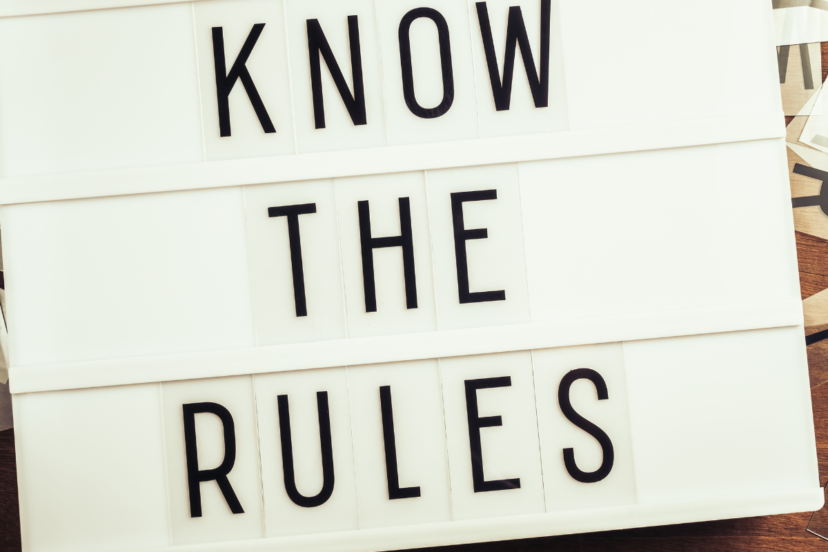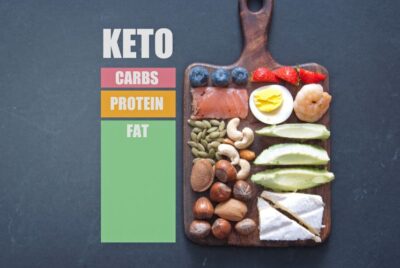Keto Diet Rules: What You Need to Know to Stay on Track
Whether you’ve decided to embark on the exciting journey of the ketogenic diet, or maybe you’re just keto-curious? Either way, you’re in the right place. The keto diet is a scientifically-backed eating regimen that’s been proven to help with weight loss, among other health benefits. It’s not just a trend; it’s a lifestyle that millions swear by.
But why are rules important, you ask? Think of them as your road signs on this transformative journey. They guide you, helping you avoid common pitfalls and ensuring you reach your destination—whether that’s weight loss, better mental clarity, or a more energized life—in the most efficient way possible.
Keto Diet Rules: What You Really Need to Know
If you’re just starting out with keto, the rules might feel a little overwhelming at first. I’ve been there. But once you understand the basics, it becomes second nature. The keto diet isn’t about starving yourself or counting every calorie—it’s about changing your fuel source. Instead of running on carbs, your body learns to burn fat for energy. And that’s where the magic happens.
Here are the core rules of the keto diet I always follow and recommend:
1. Keep Carbs Low (Really Low)
This is the heart of the keto diet. You’ll want to stay under 20–50 grams of net carbs per day. That means cutting out sugar, grains, starchy veggies, and most fruits. If you’re wondering how much sugar you can have on keto, the answer is: as close to zero as possible.
To make tracking easier, consider using a macro-tracking app along with a digital kitchen scale for precise portion control. A keto urine test strip kit can also help confirm when you’re in ketosis.
2. Eat Plenty of Healthy Fats
Fat should make up the majority of your calories—around 70–75%. That includes foods like avocado, olive oil, nuts, seeds, butter, and fatty cuts of meat. Some people thrive on up to 100 grams of fat on keto, especially when starting out or doing Lazy Keto Meals.
3. Moderate Your Protein Intake
Keto isn’t a high-protein diet. Too much protein can be converted into glucose, which can stall fat-burning. Stick to moderate portions of meat, eggs, and seafood, and focus more on fat for fuel. If you use protein supplements, opt for a keto-friendly protein powder that’s low in carbs and designed for fat-focused diets. This ensures you’re getting what you need without accidentally going over on protein.
4. Stay Hydrated and Watch Electrolytes
This part is huge—and often overlooked. When you cut carbs, your body sheds water and electrolytes fast. That’s why some people get keto brain fog or muscle cramps. Replenish with water, salt, magnesium, and potassium. I drink bone broth or use electrolyte tablets daily.
5. Use Whole Keto Cooking Ingredients
Focus on real, unprocessed foods. Ditch the packaged snacks and make meals using simple keto cooking ingredients. Having the right keto kitchen tools and meal prep containers makes it way easier to stay consistent.
6. Track (At Least in the Beginning)
I always recommend tracking your carbs, fat, and protein for the first couple of weeks. It helps you spot where sneaky carbs might be hiding and keeps your macros in check. After that, many people transition to lazy keto once they know what works for them.
7. Be Patient with Your Body
You might feel a little sluggish or experience keto bloating or digestive changes in the first few days. That’s normal—your body is learning a whole new way to fuel itself. Give it time, and support the process with sleep, hydration, and clean food.
8. Meal Timing Matters
Yes—when you eat is just as important as what you eat.
Fasting
Heard of intermittent fasting vs keto? Combining the two can supercharge your results. I personally love the 16/8 method—fast for 16 hours, eat during an 8-hour window. It boosts fat loss, mental clarity, and keeps your insulin levels stable.
Meal Frequency
There’s no one-size-fits-all, but most people feel great with two or three satisfying meals a day. If you’re not hungry, don’t eat. That’s the beauty of keto—you can trust your body again.
9. Exercise and the Keto Diet
Exercise is like the turbo button on a video game controller; it can accelerate your results.
Types of Exercise
Both aerobic (cardio) and anaerobic (strength training) exercises are beneficial. While cardio burns more calories during the workout, strength training has a more extended calorie-burning effect.
When to Exercise
The timing of your workouts can also affect their efficiency. If you can manage it, try exercising in a fasted state for increased fat oxidation and other metabolic benefits.
What to Eat and Avoid on Keto
One of the biggest questions I get is: “Okay, but what can I actually eat on keto?” And it’s a fair question—because when you’re changing your eating habits, it helps to have a clear list in front of you.
Let me walk you through the foods to enjoy and the ones to leave out to stay in ketosis, burn fat, and feel your best.
What to Eat on Keto
Here’s what makes up the core of a clean, effective keto diet:
- Healthy fats: Avocados, olive oil, coconut oil, butter, ghee, nuts, and seeds
- Protein (in moderation): Eggs, chicken, beef, pork, fatty fish like salmon or sardines
- Low-carb veggies: Spinach, kale, zucchini, cauliflower, broccoli, cabbage
- Full-fat dairy: Cheese, cream, plain Greek yogurt (watch carbs), cottage cheese
- Keto snacks: Hard-boiled eggs, cheese sticks, olives, pork rinds, nut butter
- Keto-friendly sweets: Sugar-free chocolate, homemade keto candy, berries in small amounts
- Beverages: Water, black coffee, herbal teas, sparkling water with no sugar
Having the right keto cooking ingredients in your pantry makes meal prep so much easier. I always keep a few basics ready in my keto meal prep containers, especially when I know I’ll have a busy week.
What to Avoid on Keto
Some of these might surprise you, but they’re common reasons why people fall out of ketosis:
- Sugar: Soda, candy, syrup, juice, sweet sauces—even in small amounts
- Grains: Bread, pasta, rice, corn, oats, cereal, even “whole grain” or gluten-free versions
- Starchy vegetables: Potatoes, sweet potatoes, carrots (in large amounts), corn, peas
- Most fruits: Bananas, apples, grapes, mangoes—these are high in natural sugars
- Beans and legumes: Chickpeas, lentils, black beans, baked beans
- Low-fat or “diet” products: These often sneak in carbs and sugar
- Processed snacks: Granola bars, crackers, anything labeled “low-fat” or “reduced sugar”
- Alcohol (most types): Beer, sweet wines, cocktails with mixers
Challenges and How to Overcome Them on Keto
Let’s be honest—keto isn’t always easy, especially in the beginning. As someone who’s helped hundreds of people through their keto journey, I’ve seen the same roadblocks pop up again and again. But the good news? Every challenge has a solution. Here’s what to expect, and how to push through without giving up.
1. The Keto Flu: Ah, the dreaded keto flu. As your body adjusts to burning fat instead of carbs, you might feel a bit under the weather. Symptoms like headaches, fatigue, and irritability are common but temporary. Stay hydrated and consider supplementing with electrolytes.
2. Social Pressure or Eating Out: Navigating social gatherings can be a minefield of carb-loaded temptations. Planning ahead is crucial. Consider eating before you go out or bringing keto-friendly snacks with you.
3. Keto Brain Fog: You’re eating clean, but your brain feels slow or unfocused. Keto brain fog usually happens when electrolytes are low or fat intake isn’t high enough. Add more healthy fats (like MCT oil or avocado), and make sure you’re drinking enough water. Sometimes pairing keto with intermittent fasting can help reset your focus too.
4. Digestive Issues (Constipation or Bloating)
The challenge: Going low-carb can slow digestion at first, and many people experience keto bloating or constipation. Add fiber-rich keto greens like spinach, zucchini, and chia seeds. Drink more water and try magnesium citrate at night if needed. A short keto cleanse using light, clean meals can also help reset your system.
5. Gaining Weight on Keto: You’re following the plan, but the scale goes up. First, don’t panic. Initial water retention or building lean muscle can mask fat loss. But also look at your portion sizes—eating too many calories (even from fat) can stall progress. Tracking macros for a few days can highlight hidden issues.
6. Feeling Deprived or Bored with Food: You’re tired of eggs and bacon and starting to crave the old stuff. Switch things up with new keto cooking ingredients, try a different keto recipe, or treat yourself to a new gadget for your keto kitchen tools collection. Explore lazy keto meals, keto desserts, or even sugar-free keto candy to keep things fun.
7. Thinking You Have to Be “Perfect”: One mistake, and it feels like you’ve blown the whole thing. Give yourself grace. Keto isn’t about perfection—it’s about progress. If you slip, just reset with a keto reboot or intermittent fasting the next day. One off day won’t undo your long-term results.
Conclusion
And there you have it, the ultimate guide to keto diet rules! It’s a lifestyle change, and like any significant change, it comes with its challenges. But armed with these rules, you’re well on your way to a healthier, more energized life.
Frequently Asked Questions
Is keto safe for everyone? Not necessarily. While many people benefit from the keto diet, it’s not suitable for everyone. Consult a healthcare professional if you have pre-existing health conditions, are pregnant, or are underweight.
Why do I feel tired or sluggish on keto? That tired, foggy feeling is often part of the keto flu, a temporary stage as your body switches from burning carbs to fat. Stay hydrated, increase electrolytes (especially sodium, magnesium, and potassium), and add more healthy fats to your meals.
What if I cheat? Cheating happens to the best of us. You’ll probably be kicked out of ketosis, but don’t despair. Get back on track and you’ll re-enter ketosis within a couple of days.
Is keto expensive? It can be. High-quality meats and organic produce come at a price. However, planning and bulk buying can make it more affordable.
Can I drink alcohol? If you must, opt for low-carb options like dry wine or spirits like vodka or gin but avoid mixers with sugar.




